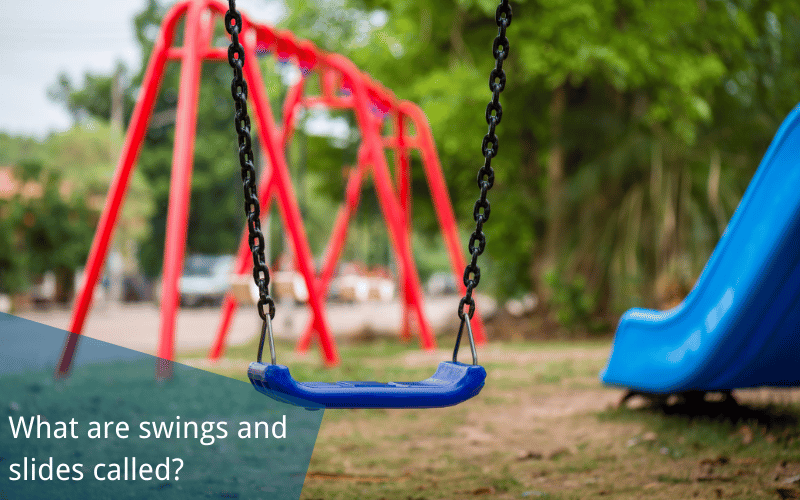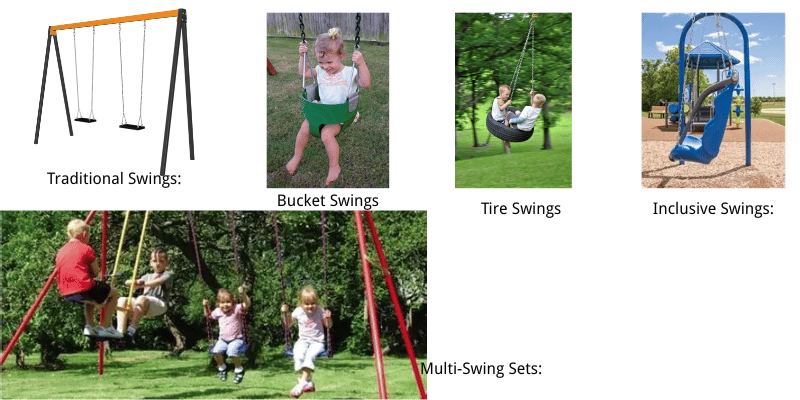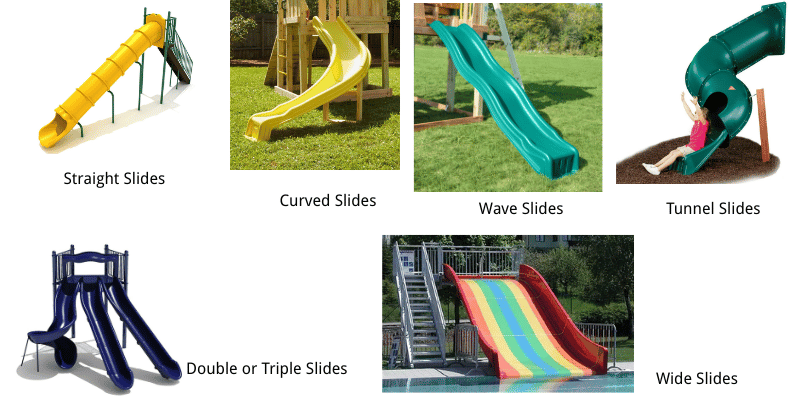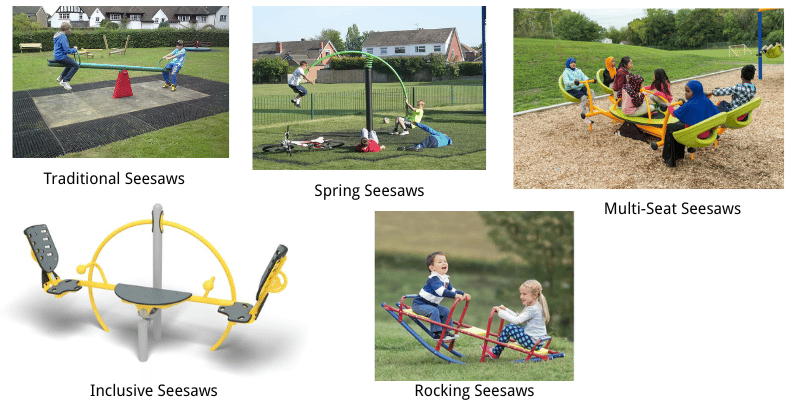Playgrounds are more than just spaces for children to play—they are essential environments that foster physical, social, and cognitive development. Equipped with a variety of structures and tools, playgrounds encourage active, imaginative, and inclusive play for children of all ages and abilities. From traditional swings and slides to modern innovations like sensory panels and themed play areas, playground equipment has evolved to meet the diverse needs of communities. This article explores the importance of playground equipment, its various types, and the role it plays in creating safe, engaging, and inclusive play spaces.
Table of Contents
ToggleOverview of Playground Equipment
Definition of Playground
A playground is a designated space where children can engage in physical activities, socialize, and explore their creativity through play. These areas are typically equipped with structures and tools designed to encourage active and imaginative play. Playgrounds can be found in parks, schools, and indoor facilities, catering to children of various age groups.
Importance of Playground Equipment
Playground equipment plays a vital role in fostering children’s physical, social, and cognitive development.
- Physical Development: Climbing, sliding, and swinging help children build strength, coordination, and motor skills.
- Social Interaction: Playgrounds provide opportunities for children to interact, share, and collaborate, enhancing their social skills.
- Imaginative Play: Features like themed structures or sensory panels encourage creativity and problem-solving.
- Health Benefits: Active play promotes physical fitness, helping to combat childhood obesity and improve overall well-being.
- Inclusive Play: Modern playgrounds often include equipment designed for children with disabilities, ensuring everyone can participate.
By offering these benefits, playground equipment contributes to a well-rounded and enjoyable play experience.
Types of Playground Equipment
Playground equipment comes in various forms, each designed to cater to different activities and age groups.
- Climbing Structures: These include monkey bars, climbing walls, and rope nets, which challenge children’s strength and coordination.
- Slides: Available in different sizes and shapes, slides provide a thrilling experience while promoting balance and spatial awareness.
- Swings: A classic feature, swings help develop core strength and provide a calming, rhythmic motion.
- Sensory Play Equipment: Items like musical panels, textured surfaces, and water features engage children’s senses and encourage exploration.
- Themed Play Areas: Structures designed as castles, ships, or jungles spark imaginative play and storytelling.
- Inclusive Equipment: Features like wheelchair-accessible swings or sensory panels ensure children of all abilities can enjoy the playground.
These diverse options allow playgrounds to cater to a wide range of interests and developmental needs, making them a valuable resource for communities.
Common Playground Equipment Names
Swings and Swing Sets
Swings are a timeless playground favorite, offering both fun and developmental benefits for children.
- Traditional Swings: These feature a simple seat suspended by chains or ropes, allowing children to swing back and forth.
- Bucket Swings: Designed for toddlers, these swings have a bucket-shaped seat with leg openings to ensure safety and stability.
- Tire Swings: Made from recycled tires, these swings can accommodate multiple children and spin in various directions.
- Inclusive Swings: These are specially designed for children with disabilities, featuring harnesses or wider seats for added support.
- Multi-Swing Sets: These sets include multiple swing types, catering to different age groups and preferences.
Swings not only provide entertainment but also help children develop balance, coordination, and core strength.
Slides: Types and Features
Slides are a staple of playgrounds, offering excitement and physical activity for children of all ages.
- Straight Slides: The classic design, featuring a straight, smooth surface for a quick descent.
- Curved Slides: These slides add an extra element of fun with gentle curves or spirals.
- Wave Slides: Featuring a wavy surface, these slides create a bumpy, thrilling ride.
- Tunnel Slides: Enclosed slides that provide a sense of adventure and are often part of larger play structures.
- Double or Triple Slides: Allow multiple children to slide simultaneously, encouraging social interaction and friendly competition.
- Wide Slides: Designed for group play, these slides accommodate several children at once.
Slides promote physical fitness by encouraging climbing and balance while providing a fun, exhilarating experience.
Seesaws and Their Variants
Seesaws are a classic playground feature that fosters teamwork and coordination.
- Traditional Seesaws: These consist of a long plank balanced on a central pivot, requiring two children to work together to move up and down.
- Spring Seesaws: Equipped with a spring base, these seesaws offer a gentler motion, making them suitable for younger children.
- Multi-Seat Seesaws: Designed for group play, these seesaws can accommodate three or more children at once.
- Inclusive Seesaws: These feature wider seats or harnesses to ensure children of all abilities can participate.
- Rocking Seesaws: A modern variant that allows for back-and-forth rocking motion, often with animal-shaped designs for added fun.
Seesaws encourage social interaction, balance, and coordination, making them a valuable addition to any playground.
Traditional vs. Modern Playground Equipment
Traditional Playground Equipment Names
Traditional playground equipment has stood the test of time, offering simple yet effective ways for children to play and develop.
- Swings: Classic swing sets with flat or bucket seats remain a staple in playgrounds, providing endless fun and physical activity.
- Slides: Straight slides made of metal or plastic have been a favorite for generations, offering a quick and exciting descent.
- Seesaws: The traditional plank-and-pivot design encourages teamwork and balance as children move up and down.
- Monkey Bars: These horizontal bars challenge children to swing from one bar to the next, building upper body strength.
- Merry-Go-Rounds: Spinning platforms that children can push and ride, promoting coordination and group play.
- Climbing Frames: Basic metal or wooden structures designed for climbing, crawling, and imaginative play.
These timeless pieces of equipment focus on physical activity and social interaction, forming the foundation of many playgrounds.
Modern Playground Equipment Innovations
Modern playgrounds incorporate innovative designs and technology to create more engaging and inclusive play experiences.
- Rope Climbers: Flexible rope structures allow children to climb in multiple directions, encouraging creativity and problem-solving.
- Interactive Panels: Features like musical instruments, puzzles, and sensory boards engage children’s senses and cognitive skills.
- Themed Play Structures: Castles, pirate ships, and space stations transform playgrounds into imaginative worlds.
- Zip Lines: Mini zip lines provide a thrilling ride while improving balance and coordination.
- Climbing Walls: Scaled-down rock walls offer a safe way for children to develop strength and confidence.
- Smart Play Equipment: Some playgrounds now include digital features, such as augmented reality games or interactive screens, to blend technology with physical play.
These innovations make playgrounds more dynamic and appealing to children of all ages and abilities.
Inclusive Playground Designs
Inclusive playgrounds ensure that children of all abilities can play together in a safe and welcoming environment.
- Accessible Swings: Swings with harnesses or bucket seats accommodate children with mobility challenges.
- Ramps and Platforms: Wide, gently sloping ramps allow wheelchair users to access elevated play areas.
- Sensory Play Features: Equipment like textured panels, musical instruments, and water play areas engage children with sensory processing needs.
- Ground-Level Activities: Features like sand tables, interactive panels, and spinning elements provide fun for children who cannot climb.
- Group Play Areas: Inclusive designs encourage social interaction by creating spaces where children of all abilities can play together.
- Safety Enhancements: Soft, impact-absorbing surfaces reduce the risk of injury and make the playground safer for everyone.
By incorporating these elements, inclusive playgrounds promote equality, understanding, and shared experiences among children.
Playground Equipment Lists
Comprehensive Playground Equipment List
A well-rounded playground includes a variety of equipment to cater to different activities and developmental needs.
- Swings: Traditional swings, bucket swings for toddlers, and inclusive swings for children with disabilities.
- Slides: Straight slides, wave slides, tunnel slides, and spiral slides for added excitement.
- Climbing Equipment: Monkey bars, rope climbers, climbing walls, and net structures.
- Seesaws: Traditional seesaws, spring seesaws, and multi-seat seesaws for group play.
- Merry-Go-Rounds: Spinning platforms for balance and coordination.
- Sensory Play Features: Musical panels, textured surfaces, and water play areas.
- Themed Play Structures: Castles, pirate ships, and jungle gyms to spark imagination.
- Balance Equipment: Balance beams, stepping stones, and wobble boards.
- Interactive Panels: Puzzles, games, and educational features for cognitive development.
This diverse list ensures a playground can engage children of all ages and abilities.
Names of Playground Equipment for Different Age Groups
Playground equipment should be tailored to the developmental stages and safety needs of various age groups.
- Toddlers (1-3 years): Bucket swings, low slides, foam climbers, and sensory panels.
- Preschoolers (3-5 years): Small climbing walls, wave slides, spring seesaws, and themed play areas.
- School-Aged Children (6-12 years): Monkey bars, rope climbers, zip lines, and interactive games.
- Teens (13+ years): Climbing walls, fitness equipment, and challenging obstacle courses.
- All Ages: Inclusive swings, merry-go-rounds, and ground-level sensory features.
By offering age-appropriate equipment, playgrounds can ensure safety and enjoyment for all users.
Safety Considerations for Playground Equipment
Safety is a top priority when selecting and maintaining playground equipment.
- Impact-Absorbing Surfaces: Use materials like rubber mats, wood chips, or sand to cushion falls.
- Age-Appropriate Design: Ensure equipment is suitable for the intended age group to prevent injuries.
- Regular Inspections: Check for wear and tear, loose bolts, or sharp edges that could pose hazards.
- Proper Spacing: Maintain adequate space between equipment to prevent collisions and overcrowding.
- Secure Anchoring: Ensure all equipment is firmly anchored to the ground to prevent tipping or movement.
- Weather Resistance: Use materials that can withstand outdoor conditions, such as UV-resistant plastics and rust-proof metals.
- Signage: Display clear instructions and age recommendations for each piece of equipment.
By addressing these safety considerations, playgrounds can provide a secure environment for children to play and explore.
Frequently Asked Questions
Q: What are swings and slides called in playground equipment?
A: Swings and slides are commonly referred to as play apparatus in playground terminology. They are essential components of any play area, designed to provide fun and support children’s physical development.
Q: What types of swings are available in modern playgrounds?
A: Modern playgrounds feature a variety of swings, including traditional swings, bucket swings for toddlers, belt swings for older children, and tire swings that can accommodate multiple kids. Each type ensures safety and caters to different age groups and developmental needs.
Q: What are the names of playground equipment that includes climbing features?
A: Playground equipment with climbing features is often called climbers, jungle gyms, or rope structures. These pieces encourage physical activity, help children build upper body strength, and provide an exciting challenge.
Q: How do playground slides vary in design?
A: Playground slides come in diverse designs, including tube slides for enclosed fun, roller slides for a unique texture, and wavy slides for a thrilling ride. Each design offers a different experience, promoting active and engaging play.
Q: What is included in a playground equipment list?
A: A typical playground equipment list includes swings, slides, climbers, monkey bars, merry-go-rounds, and sensory play features. These items create a well-rounded and engaging play environment for children of all ages.
Q: What are the features of a great playground?
A: A great playground combines traditional equipment like swings and slides with modern features such as spinning equipment, sensory play panels, and inclusive designs. These elements ensure that all children, regardless of ability, can enjoy the space safely and meaningfully.
Q: How can I ensure playground safety when using swings and slides?
A: To ensure playground safety, inspect equipment regularly for wear and tear, use proper impact-absorbing surfacing beneath play structures, and supervise younger children during play. Following safety guidelines helps create a secure environment for everyone.
Q: What are some popular playground favorites like seesaws?
A: Besides swings and slides, popular playground favorites include seesaws, merry-go-rounds, and spinner equipment. These options encourage social interaction, teamwork, and a variety of play experiences for children.
Conclusion
Playground equipment serves as the backbone of any play area, offering children opportunities to grow, learn, and connect with others. Whether it’s the timeless appeal of swings and slides or the innovative features of sensory panels and climbing walls, each piece contributes to a well-rounded play experience. By prioritizing safety, inclusivity, and age-appropriate designs, playgrounds can become vibrant hubs for community engagement and child development. As playgrounds continue to evolve, they remain a vital resource for fostering creativity, physical fitness, and social interaction among children of all abilities.









